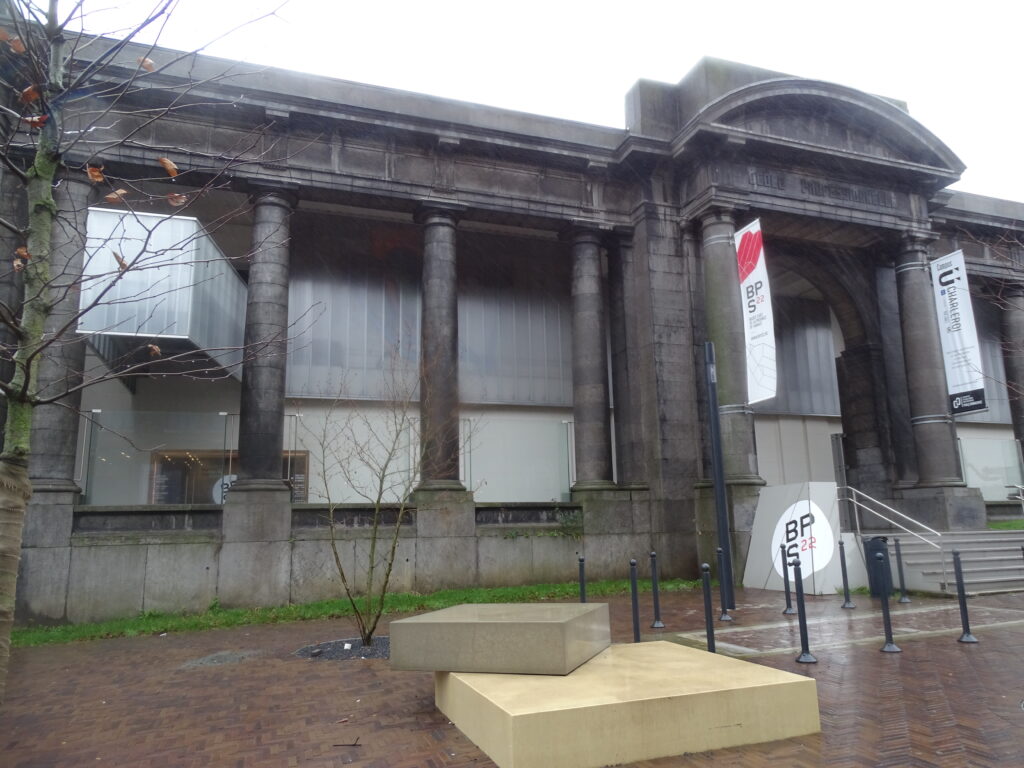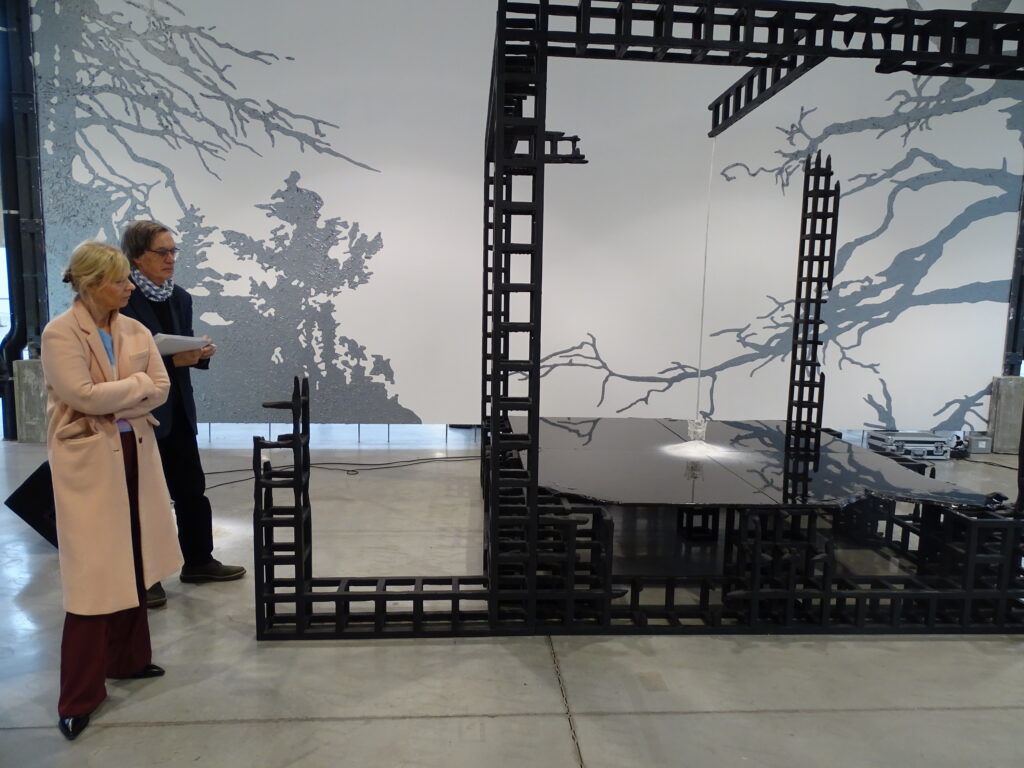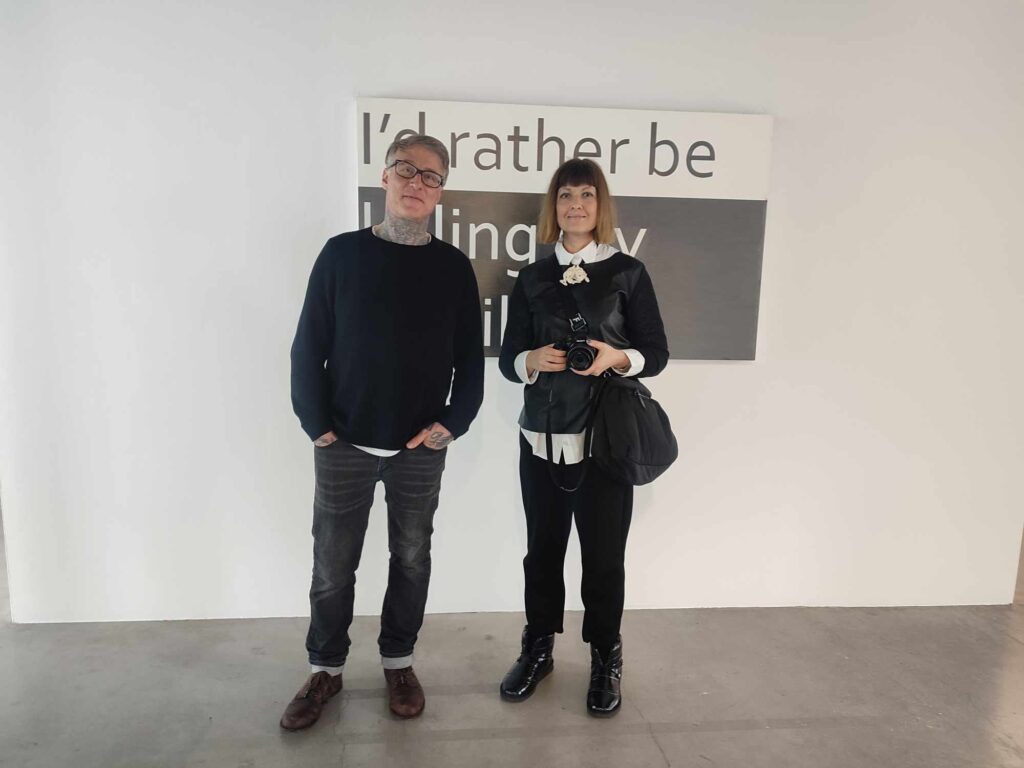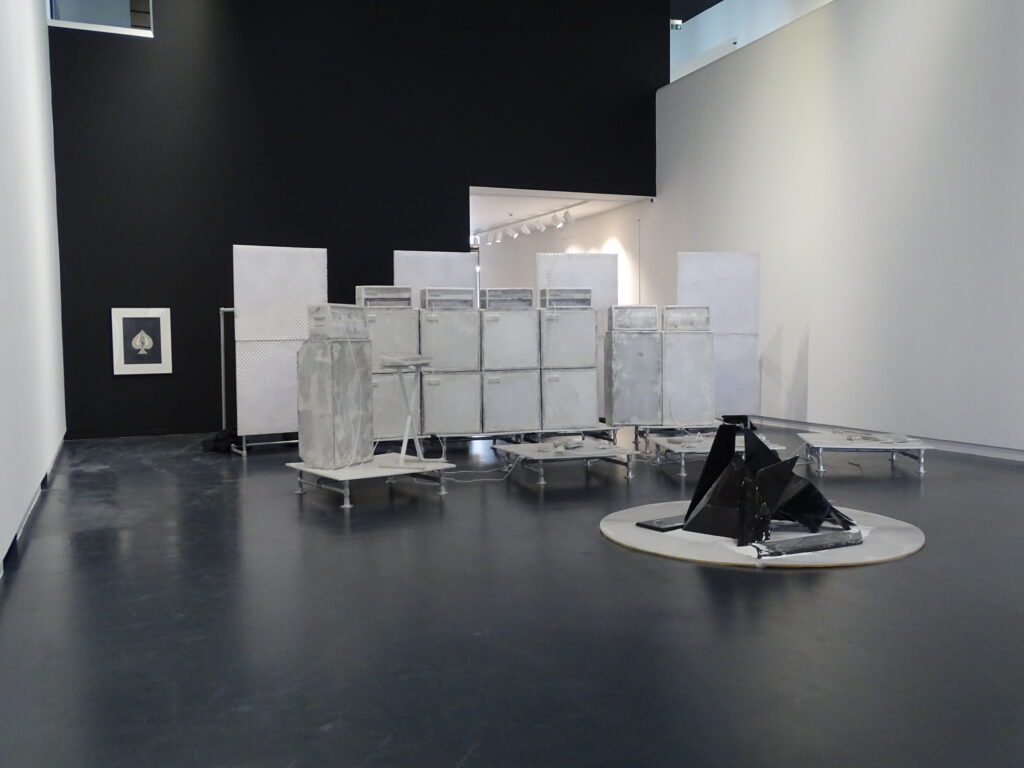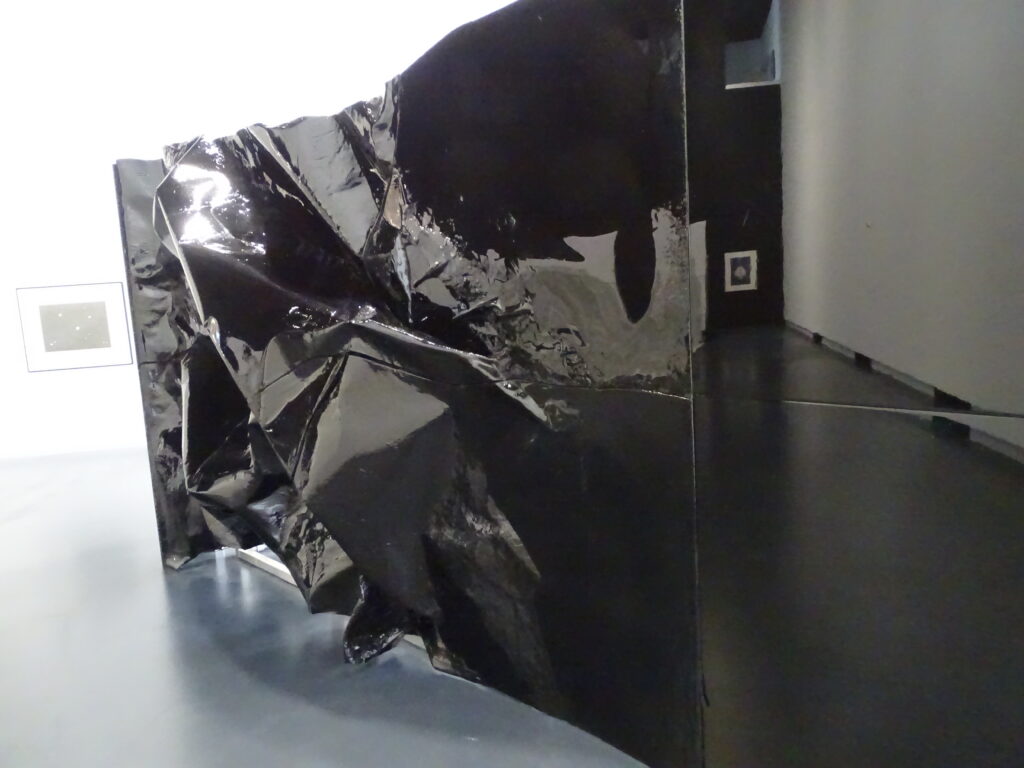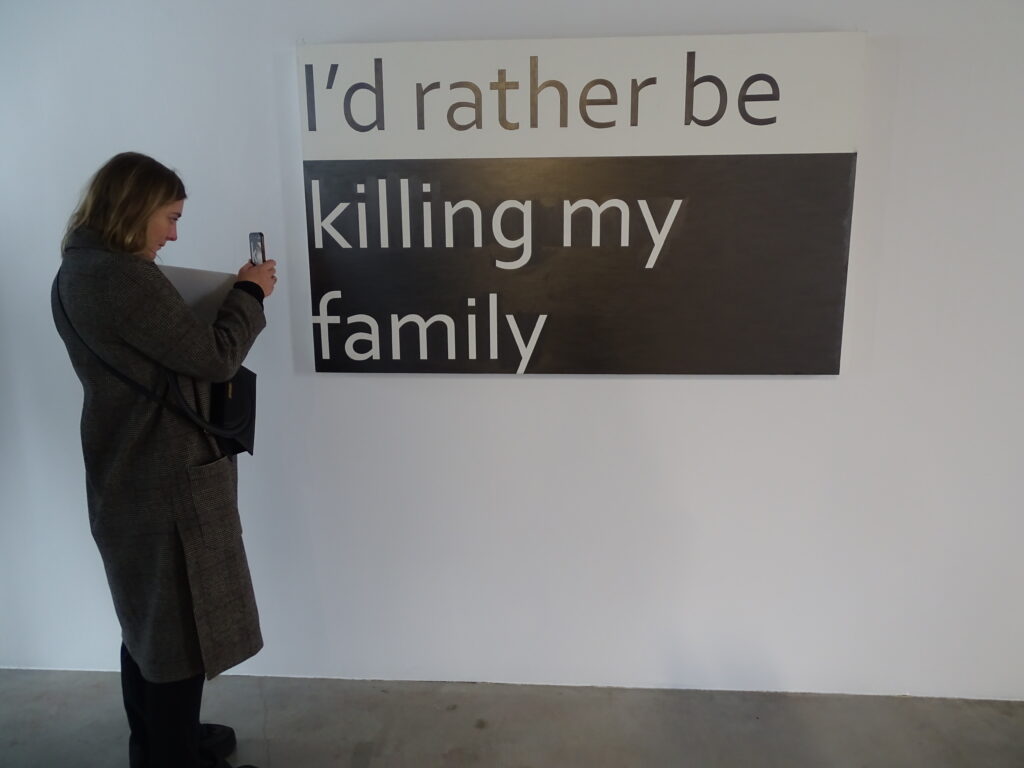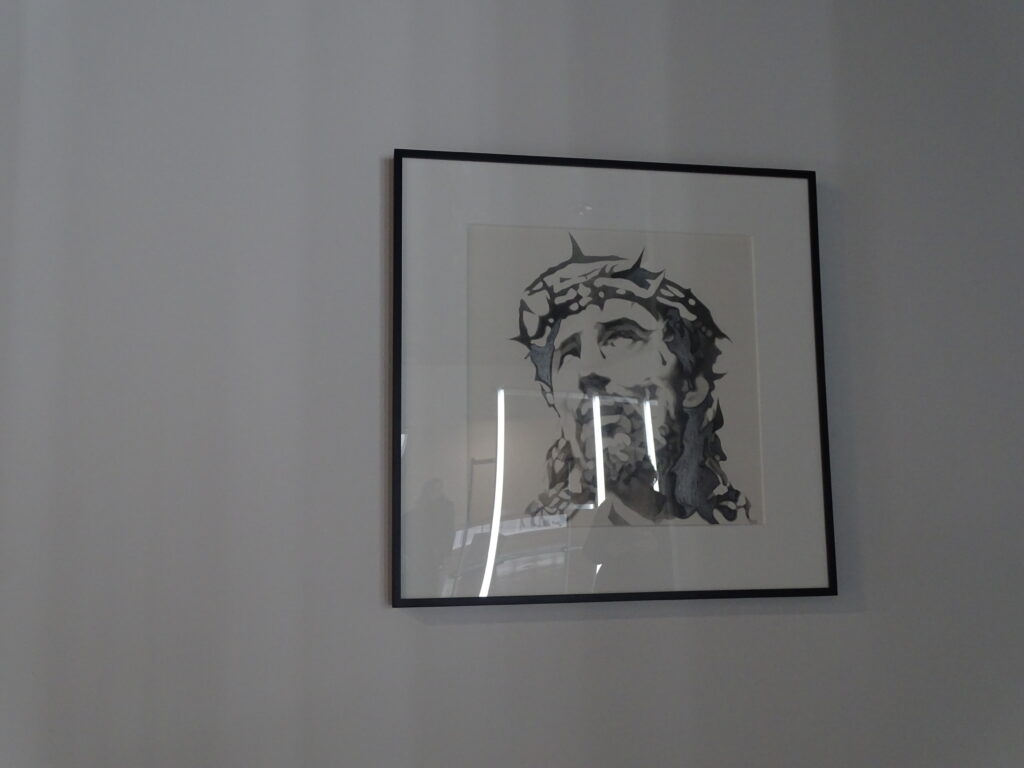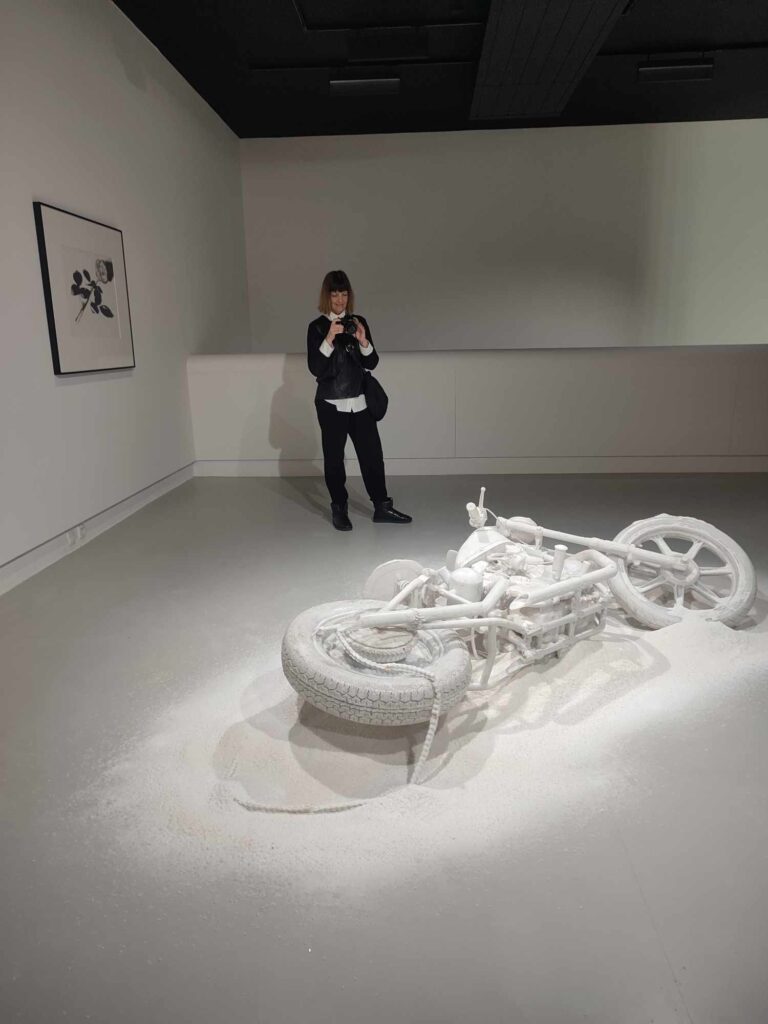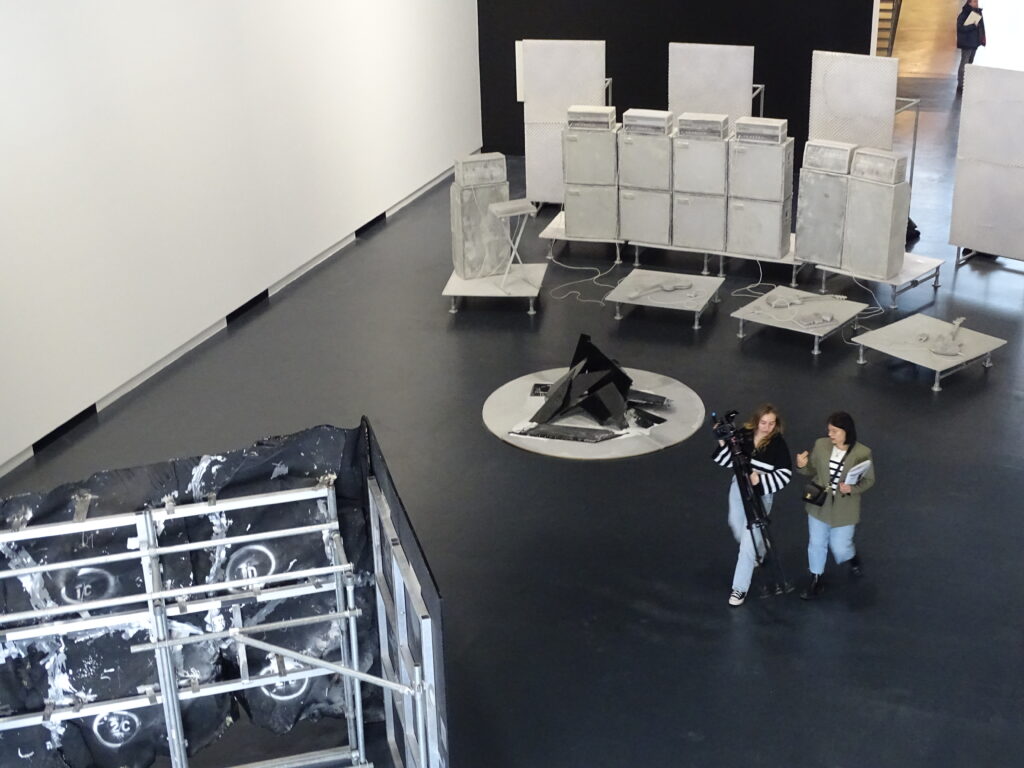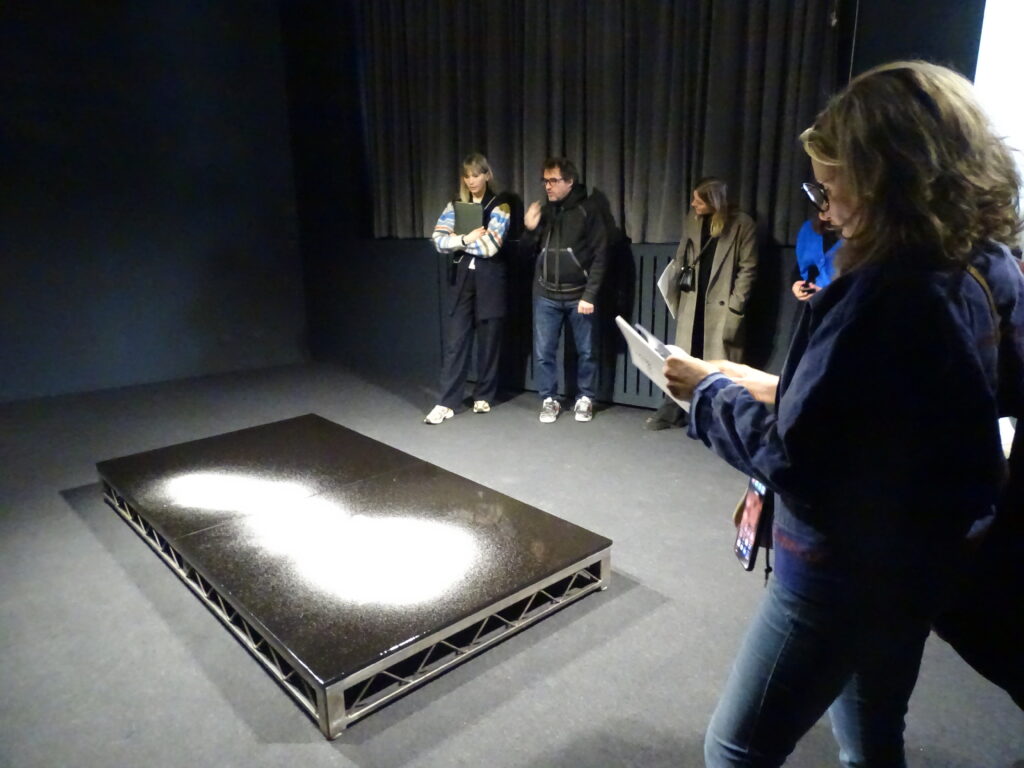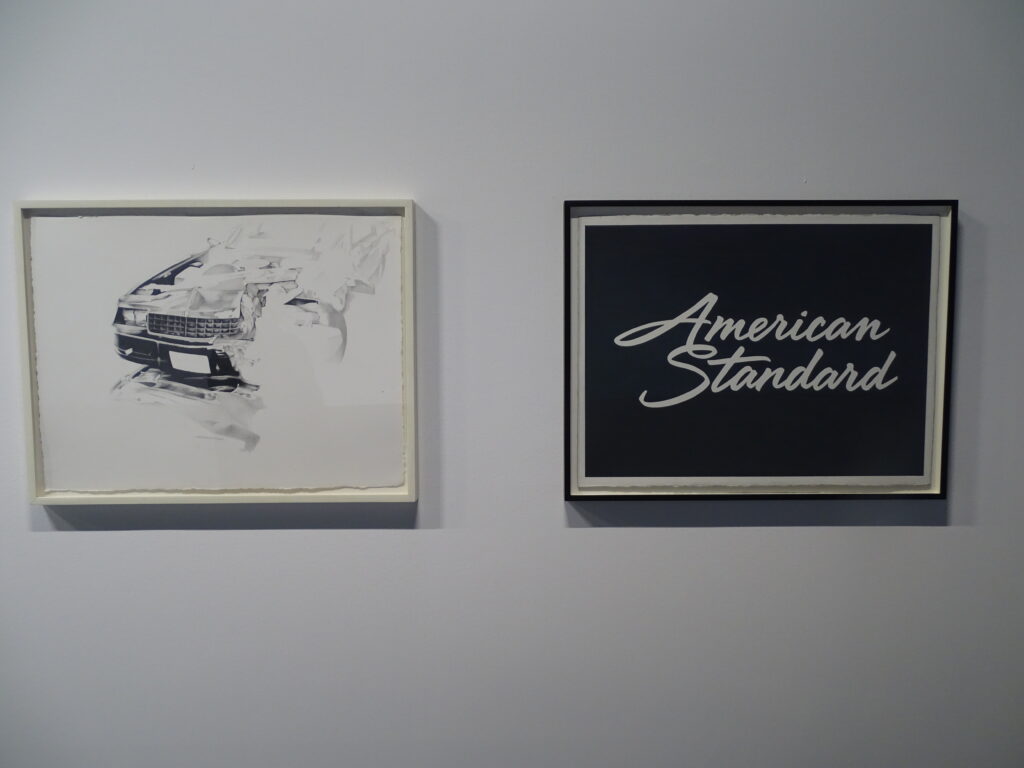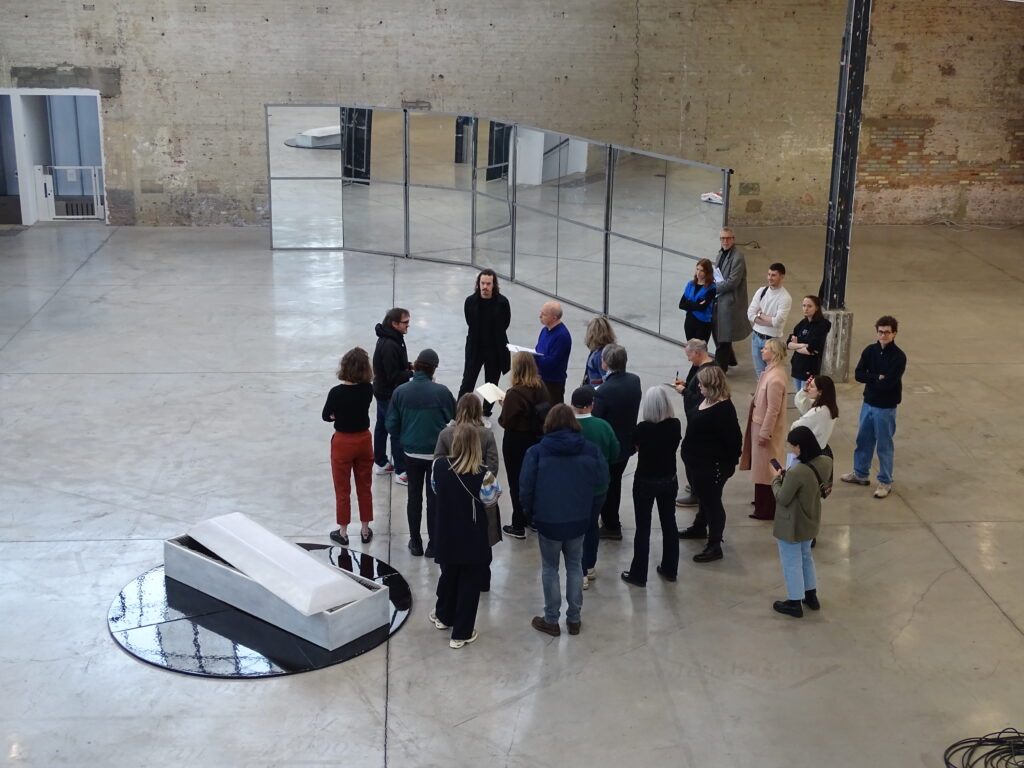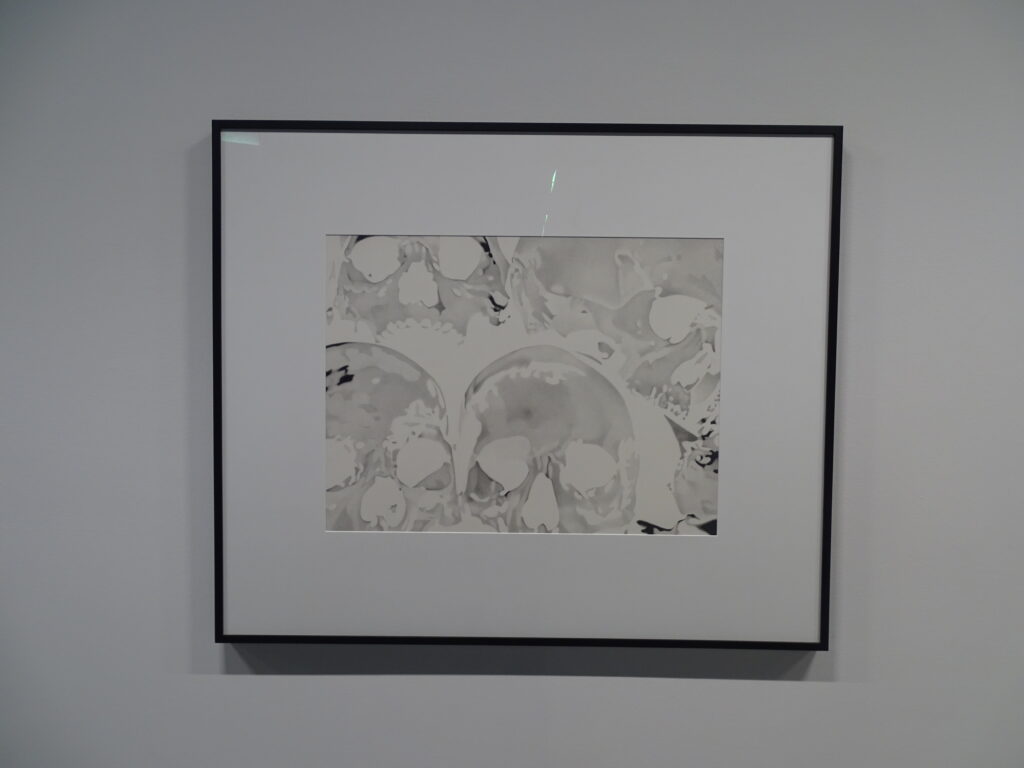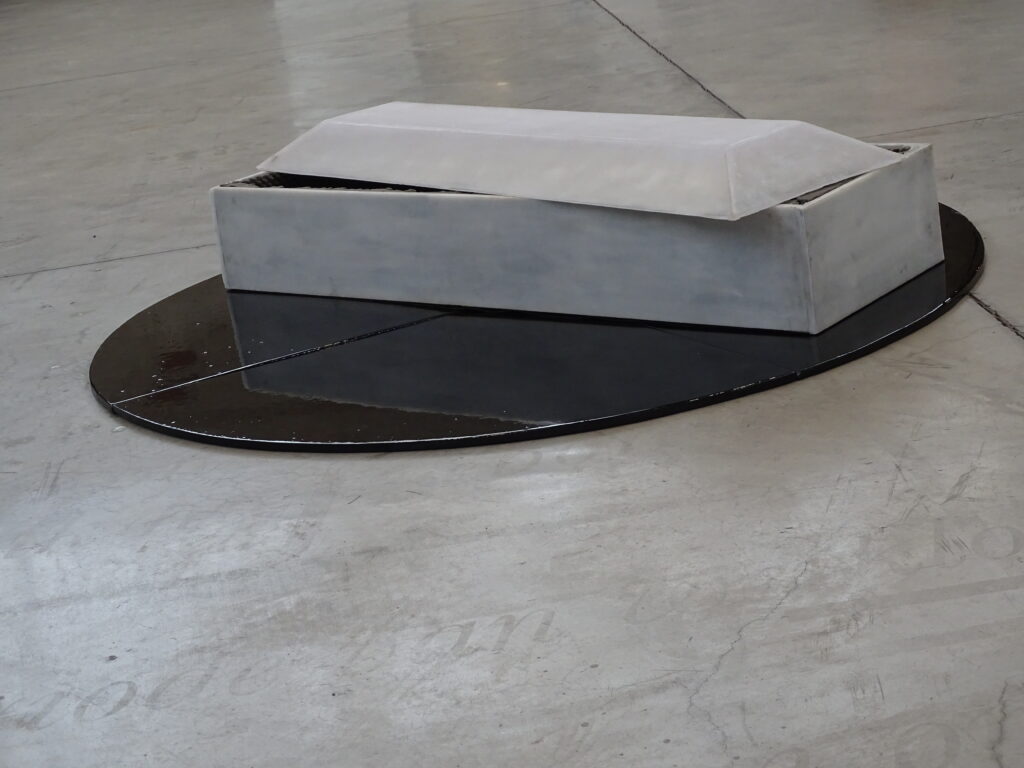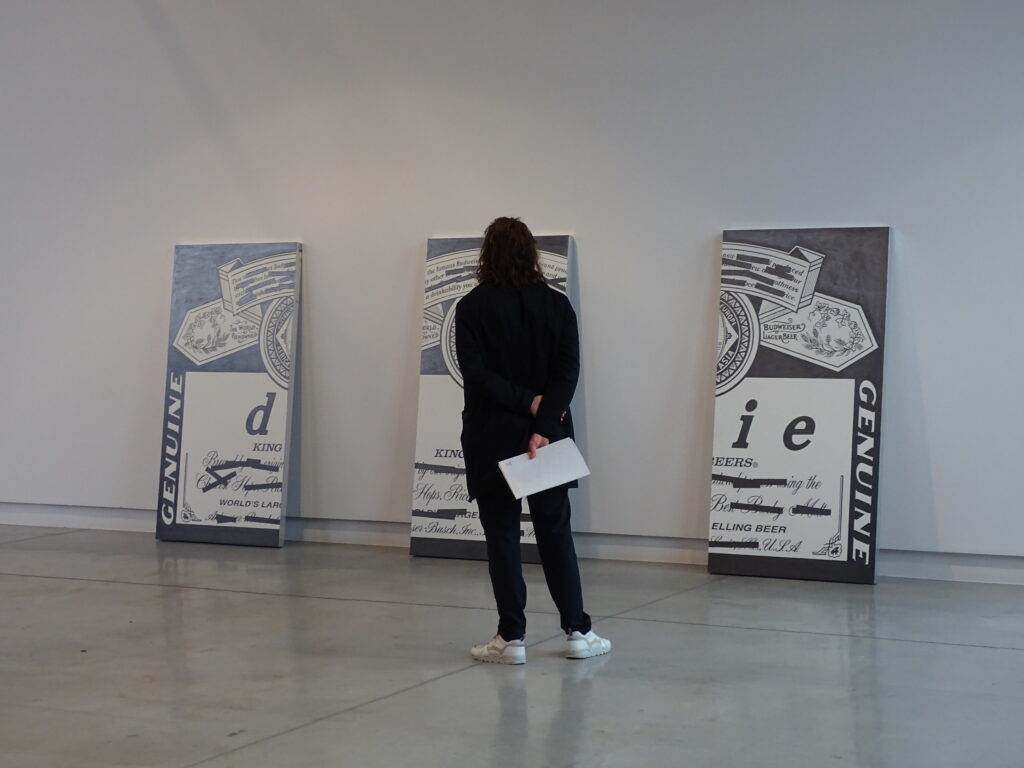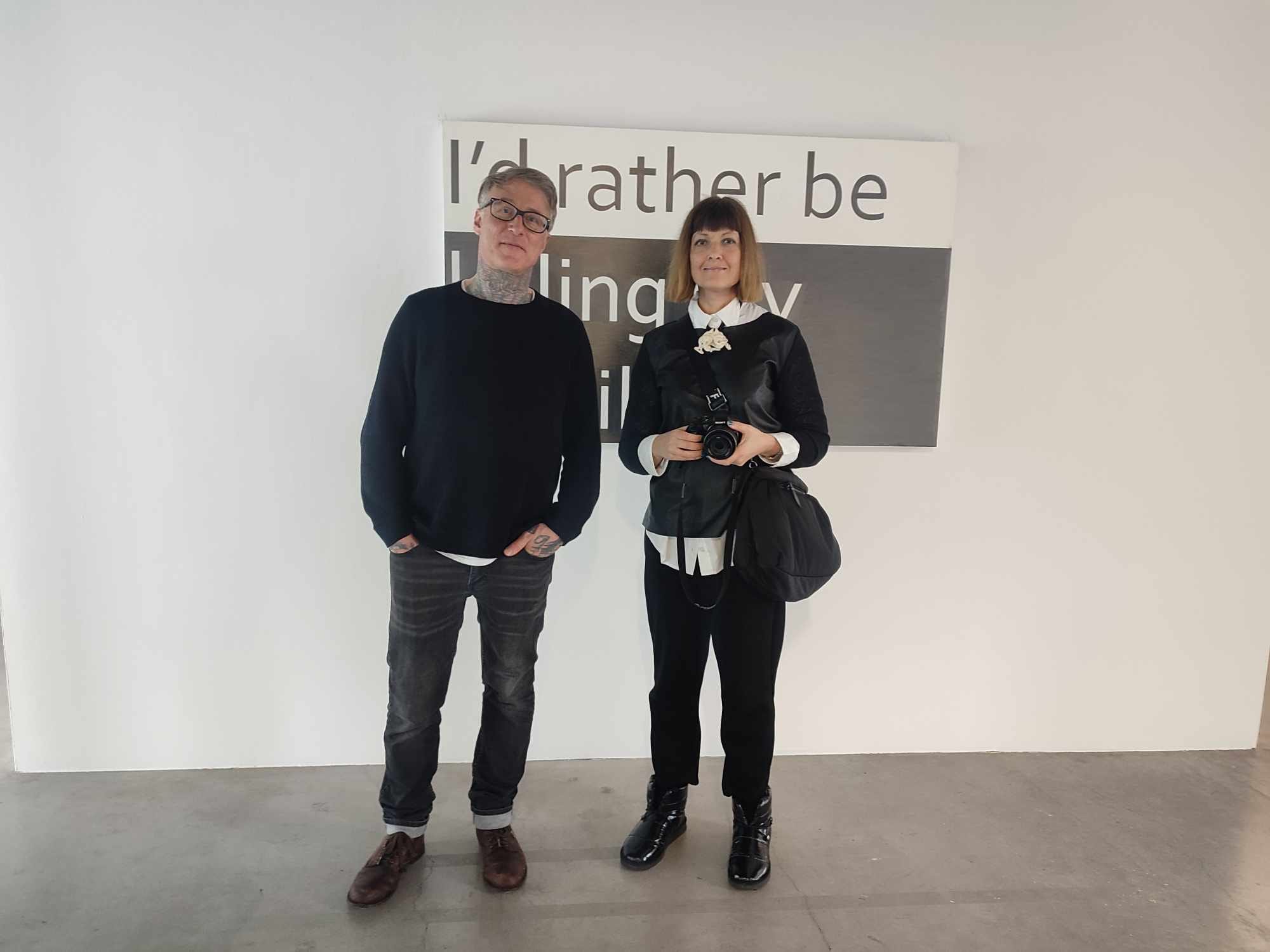All Belgians periodically visit the city of Charleroi as they enjoy traveling, and it is from its airport that low-cost airlines operate. Personally, I go there to visit my favorite and hospitable contemporary art museum, named after its address, BPS 22. I cannot recall any exhibition that made me regret crossing our small but diverse country, from Flanders to Wallonia.
This time, the spotlight is on the American artist Banks Violette, whose works have been displayed in the Saatchi Gallery and various contemporary art museums worldwide. From our first encounter, he reminded me of characters from Charles Bukowski (I’ll keep to myself whom he thought I resembled, but he is a well-read artist, allowing himself many literary allusions). Drawing inspiration from the dark side of teenage subcultures, primarily black metal, goth, and post-punk, Banks (not to be confused with Banksy) is now one of the most renowned artists globally.
Before becoming the title of his exhibition, “THE BEES MADE HONEY IN THE LION’S SKULL (2005-2023),” these lines were the title of a song and album from the 2009 metal rock band “Earth” (I liked the front song – a resonant melody). The lines don’t come from beekeeping terminology but directly reference a passage from the Old Testament: “And after a while he returned to take her, and he turned aside to see the dead body of the lion; and behold, a swarm of bees and honey were in the body of the lion. He took some of it in his hands and went along, eating as he went. And he came to his father and mother, and gave some to them, and they ate. But he did not tell them that he had taken the honey from the dead body of the lion” (Book of Judges, Chapter 14, verses 8 and 14). The band has a rather dark rhetoric. Still, the life cycle of the artist, who started his creative journey as a tattoo artist, was filled with hazardous substances and soaked in alcohol dependence.
Banks’ life itself originated in the city of Ithaca (not Odysseus’s homeland but north of New York), known for salt mining, a motif he generously incorporates into his installations. Essentially, all his works are created from metal, mirrors, salt-covered objects, black screens, and white fluorescent tubes. The artist utilizes a constant aesthetic contrast between black and white, a contrast that finds a particular resonance in the thirty exhibited works: between noise and silence, presence and absence, Gothic romanticism and minimalism.
The coolest installation is “Voidhanger” (hanging emptiness). This space consists of a broken charred wooden structure resembling both a concert stage and the constructions of the minimalist artist Sol LeWitt. In the center hangs a replica of a microphone made of salt and resin, with salt scattered beneath something resembling a gallows. In the background, shadows of bare trees, reproduced with gray tape, complement the tragic-romantic atmosphere of the installation.
Voidhanger is also the title of a work by the Darkthrone group (2001). The imagination of sentimental suffering, death, suicide, destruction, pagan or antichrist rituals, and the posthumous fairy universe are often mobilized in the aesthetics of rock-metal bands. For Banks Violette, this is a new interpretation of favorite themes from German Romanticism, such as forests and bare trees (with Caspar Friedrich and Goethe as patrons of painting and literature).
Yes, the artist told me in an interview, with a total neck tattoo resembling a beautiful iguana, “I criticize American society, but it’s also self-critique – I am its product and component.”
Salt mining has disappeared from Banks’ hometown of Ithaca, connecting him with the Belgian city of Charleroi, where the vibrant life dwindled with the closure of mines. Thus, the Banks Violette exhibition is particularly fitting for the BPS23 museum.
